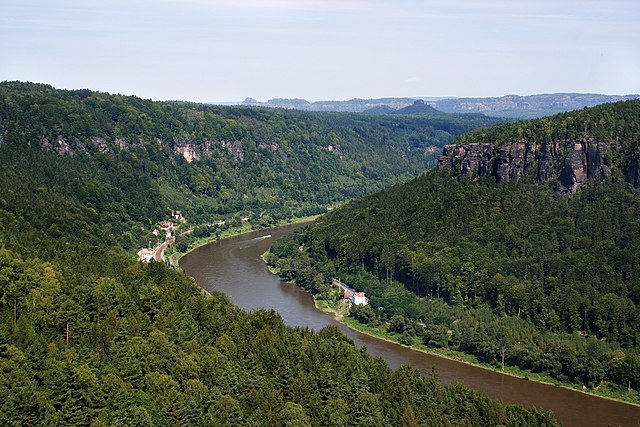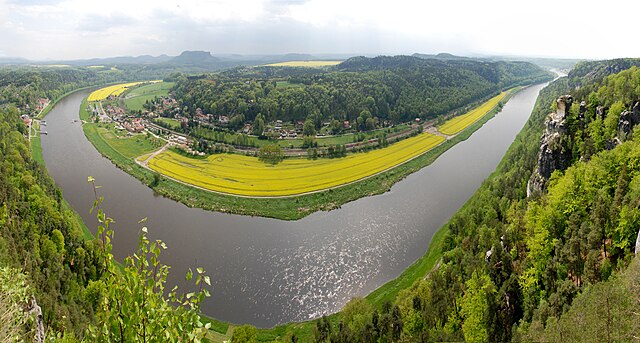The Elbe is one of the major rivers of Western Europe. It rises in the Giant Mountains of the northern Czech Republic before traversing much of Bohemia, then Germany and flowing into the North Sea at Cuxhaven, 110 kilometres northwest of Hamburg. Its total length is 1,094 km (680 mi).
The Elbe (Labe) near Děčín, Czech Republic
The Middle Elbe in the North German Plain near the village of Gorleben. In this section, the river had been part of the Iron Curtain between West and East Germany during the Cold War. For that reason, the river banks even today look relatively natural and undeveloped. (Photo taken 2011)
View of the Elbe in Saxon Switzerland, an area in Germany
The Port of Hamburg on the Elbe
Low German is a West Germanic language spoken mainly in Northern Germany and the northeastern Netherlands. The dialect of Plautdietsch is also spoken in the Russian Mennonite diaspora worldwide.
City limit sign in Lower Saxony showing that Low German is closer to English: "Altenbruch" (Standard German) "Olenbrook" (Low German), meaning "old bog/swamp" (incorporated village of Cuxhaven).
Low German-speaking area before the expulsion of almost all Low German- and German-speakers from east of the Oder–Neisse line in 1945. Low German-speaking provinces of Germany east of the Oder, before 1945, were Pomerania with its capital Stettin (now Szczecin, Poland), where east of the Oder East Pomeranian dialects were spoken, and East Prussia with its capital Königsberg (now Kaliningrad, Russia), where Low Prussian dialects were spoken. Danzig (now
A public school in Witmarsum Colony (Paraná, Southern Brazil) teaches in the Portuguese language and in Plautdietsch.
Low German dialects around the world








